The Importance of Nonviolent Communication in Peaceful Protests
Protesting has been a cornerstone of democracy for centuries. From the suffragettes fighting for women’s rights to the civil rights movement demanding racial equality, peaceful protests have played a vital role in shaping our society. But what makes a protest truly effective? The answer lies in the art of peaceful protest and the importance of nonviolent communication.
Now, I know what you’re thinking. Nonviolent communication? Isn’t that just a fancy way of saying “don’t punch people”? Well, my friend, it’s a little more nuanced than that. Nonviolent communication is about more than just physical violence. It’s about creating a space for dialogue and understanding, even in the face of adversity.
Think about it this way: when you’re trying to convince someone to see your point of view, do you think yelling and screaming at them is going to be effective? Probably not. In fact, it’s more likely to make them dig their heels in even deeper. But if you approach them calmly and respectfully, they might actually be willing to listen.
That’s the power of nonviolent communication in peaceful protests. It allows us to engage with those who disagree with us in a way that fosters understanding and empathy. It’s about finding common ground and building bridges, rather than burning them down.
Of course, this doesn’t mean that peaceful protests are all rainbows and unicorns. They can still be intense and emotionally charged. But it’s how we channel that energy that makes all the difference. Instead of resorting to violence, we can use our words and actions to make a powerful statement.
One of the key elements of nonviolent communication is active listening. This means truly hearing what the other person is saying, without interrupting or dismissing their perspective. It’s about acknowledging their experiences and validating their feelings, even if we don’t agree with them.
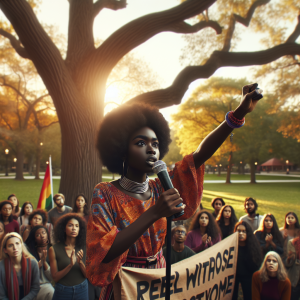
Now, I know what you’re thinking. How am I supposed to listen to someone who is spewing hate speech or promoting harmful ideologies? Trust me, I get it. It’s not easy. But by actively listening, we can better understand their motivations and address their concerns in a way that challenges their beliefs without resorting to aggression.
Another important aspect of nonviolent communication is using inclusive language. This means avoiding derogatory terms or slurs that can further divide us. Instead, we can choose words that promote unity and understanding. After all, it’s hard to have a productive conversation when you’re busy insulting each other.
Lastly, nonviolent communication is about taking responsibility for our own actions. It’s about recognizing that we have a choice in how we respond to conflict. We can choose to escalate the situation or we can choose to de-escalate it. We can choose to respond with anger or we can choose to respond with compassion.
So, the next time you find yourself at a peaceful protest, remember the art of nonviolent communication. Remember that your words and actions have the power to make a difference. And most importantly, remember that change doesn’t happen overnight. It takes time, patience, and a whole lot of understanding.
So, let’s raise our signs high and our voices even higher. Let’s make our voices heard in a way that promotes peace, unity, and understanding. Because at the end of the day, that’s what the art of peaceful protest is all about.
Strategies for Effective Organizing and Mobilizing Peaceful Protests
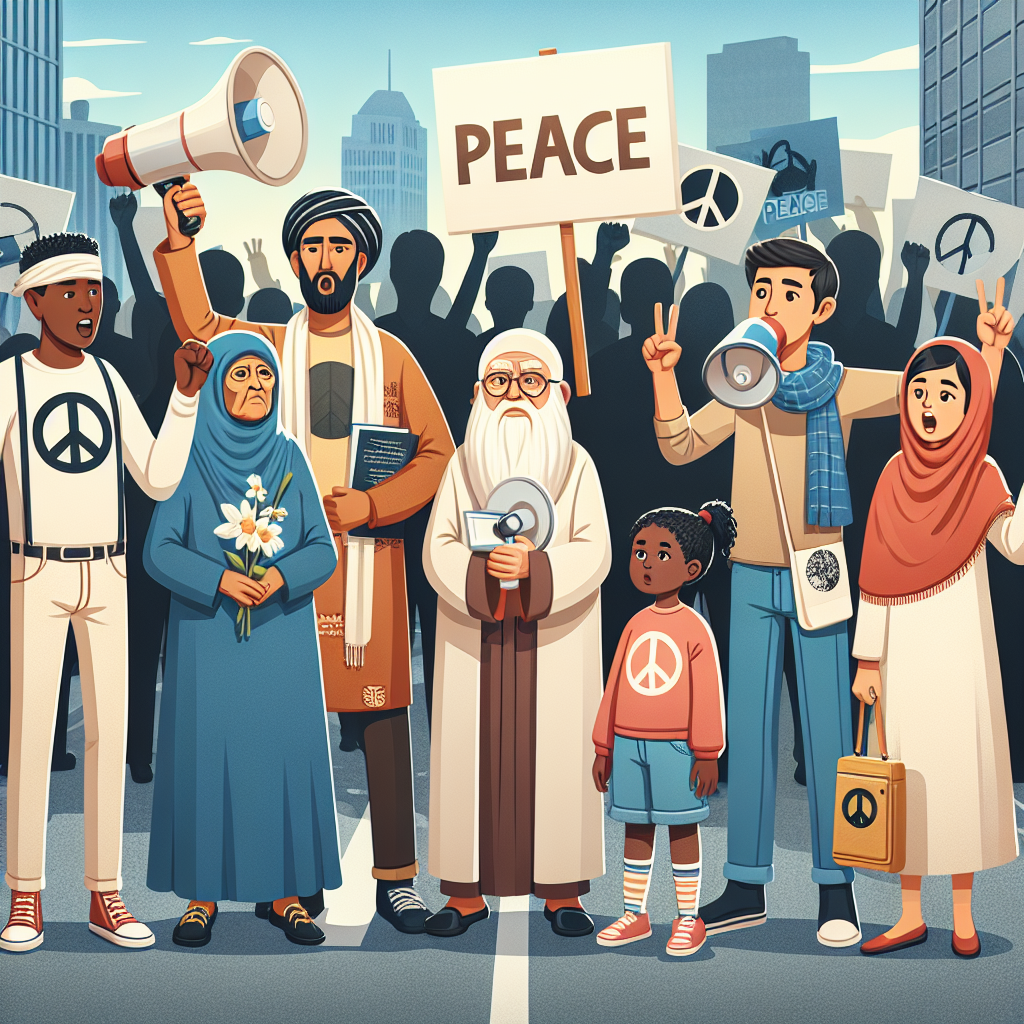
Protesting has been a cornerstone of democracy for centuries. From the suffragettes fighting for women’s rights to the civil rights movement demanding racial equality, peaceful protests have played a vital role in shaping our society. But how can you make sure your voice is heard in the midst of a sea of signs and chants? Fear not, my fellow activists, for I am here to share with you the art of peaceful protest and the strategies for effective organizing and mobilizing.
First and foremost, let’s talk about the power of social media. In this digital age, it’s essential to harness the full potential of platforms like Facebook, Twitter, and Instagram. Create catchy hashtags that encapsulate your cause and spread like wildfire. #SaveTheWhales or #EqualPayForEqualWork are just a few examples of how a simple phrase can rally the masses. And don’t forget to add a witty caption to your protest selfies – after all, a little humor never hurt anyone.
Now, let’s move on to the importance of organization. A successful protest requires meticulous planning and coordination. Start by forming a core group of dedicated individuals who share your passion. Assign roles and responsibilities – someone to handle logistics, someone to manage social media, and of course, someone to bring the snacks. Because let’s face it, no protest is complete without a few granola bars and a bag of chips.
Next, it’s time to get creative with your protest signs. Gone are the days of boring cardboard signs with generic slogans. Think outside the box and let your artistic side shine. Paint a masterpiece on a bedsheet or create a collage of magazine cutouts. The more eye-catching and thought-provoking your sign, the more likely it is to be shared on social media and catch the attention of the masses. And remember, a little humor goes a long way. A sign that says “I’d rather be binge-watching Netflix, but here I am fighting for justice” is sure to bring a smile to people’s faces.
As the day of the protest approaches, it’s crucial to spread the word far and wide. Utilize every available platform to get your message out there. Create a Facebook event and invite all your friends – and their friends – to join. Send out press releases to local media outlets and try to secure interviews to raise awareness about your cause. And don’t forget to reach out to influential figures who might be willing to lend their support. A celebrity endorsement can do wonders for your cause, not to mention the potential for some great photo ops.
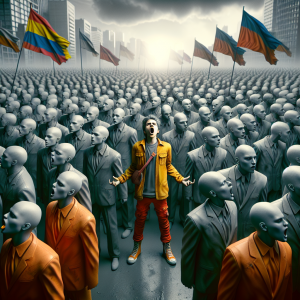
On the day of the protest, remember to stay peaceful and respectful. While it’s important to make your voice heard, it’s equally important to do so in a way that promotes unity and understanding. Avoid confrontations with counter-protesters and law enforcement. Instead, focus on spreading your message through peaceful means – singing, chanting, and engaging in thought-provoking conversations with those around you. And don’t forget to capture the moment on camera – a powerful image can speak volumes and inspire others to join your cause.
In conclusion, the art of peaceful protest is a powerful tool for change. By harnessing the power of social media, organizing effectively, and getting creative with your signs, you can make your voice heard in a sea of activism. Remember to stay peaceful, respectful, and, above all, humorous. After all, laughter is the best medicine, even in the face of injustice. So go forth, my fellow activists, and let your voices ring loud and clear. The world is waiting to hear what you have to say.
The Role of Art and Creativity in Peaceful Protests
Protesting has been a cornerstone of democracy for centuries. From the suffragettes fighting for women’s rights to the civil rights movement demanding racial equality, peaceful protests have played a vital role in shaping our society. But what makes a protest truly impactful? How can you make your voice heard above the noise? Well, my friend, the answer lies in the art of peaceful protest.
Now, you might be thinking, “Art? What does that have to do with protesting?” Well, my dear reader, art and creativity have always been powerful tools for social change. Just think about it – a catchy slogan, a powerful image, or a thought-provoking performance can capture the attention of the masses and inspire them to take action. So, let’s dive into the role of art and creativity in peaceful protests.
First and foremost, let’s talk about slogans. A good protest slogan is like a catchy tune that gets stuck in your head. It should be short, snappy, and impossible to ignore. Take the iconic slogan “Black Lives Matter,” for example. It’s simple, powerful, and instantly conveys the message of the movement. So, when crafting your protest slogan, think like a poet – be concise, be impactful, and for the love of all that is good, avoid clichés like the plague.
But slogans are just the tip of the creative iceberg. Visual art is another powerful tool in the protest arsenal. From posters to murals, visual art can transform a protest from a sea of people into a vibrant tapestry of ideas. So, grab your paintbrushes and get ready to make a statement. Remember, though, art is subjective, so don’t be afraid to push boundaries and challenge the status quo. After all, Picasso didn’t paint “Guernica” to blend in with the wallpaper.
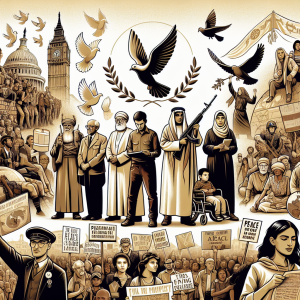
Now, let’s talk about performance art. Nothing grabs attention quite like a well-executed performance. Whether it’s a flash mob, a street theater piece, or a powerful spoken word performance, performance art can bring a protest to life and leave a lasting impression on both participants and onlookers. So, if you’ve got a flair for the dramatic, don’t be afraid to take center stage and let your creativity shine.
But here’s the thing, my friend – art alone won’t change the world. It’s the people behind the art that truly make a difference. So, gather your tribe, find like-minded individuals who share your passion for change, and create a community of activists. Together, you can amplify your message and create a force to be reckoned with. Remember, there’s strength in numbers, and a united front is a powerful force for change.
In conclusion, the art of peaceful protest is a delicate dance between creativity and activism. Slogans, visual art, and performance all play a crucial role in capturing attention, inspiring action, and making your voice heard. But at the end of the day, it’s the people behind the art that truly drive change. So, my dear reader, grab your paintbrushes, dust off your dancing shoes, and let your creativity be the catalyst for a better world. After all, as the saying goes, “Art is not a mirror held up to reality but a hammer with which to shape it.”
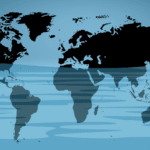


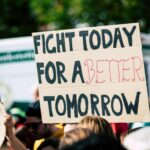

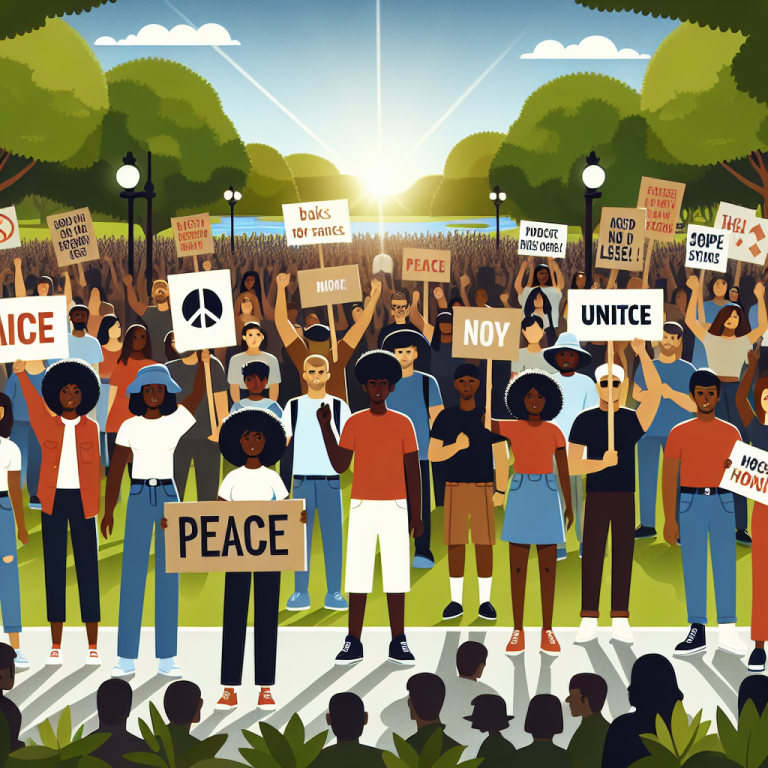
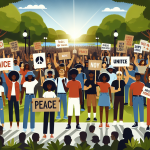

Pingback: Peaceful Protests How To Be Effective